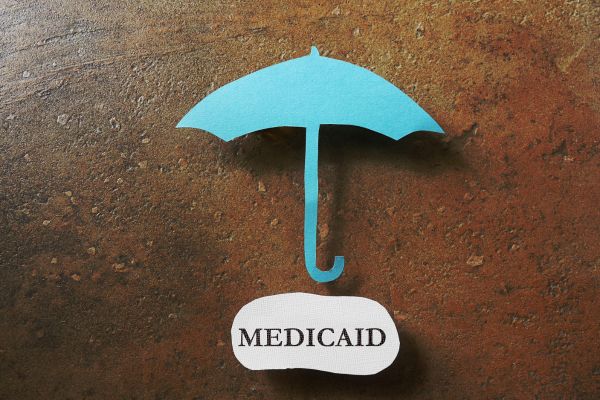When life gets tough, figuring out health coverage shouldn’t feel like climbing a mountain. Medicaid exists to help people who can’t afford private insurance, but let’s be real—trying to understand how to apply for Medicaid can feel overwhelming at first. Don’t worry, though. This guide breaks it all down in plain English so you can feel confident about taking the next step.
Understanding Medicaid Before You Apply
Before you jump into the “how to apply for Medicaid” part, it’s important to know what it is and why it matters. Medicaid is a government-funded health insurance program for people with limited income, certain disabilities, pregnant women, kids, and even some older adults. Unlike Medicare (which is mainly for seniors), Medicaid eligibility depends more on income and personal situation.
The thing is, every state runs its own Medicaid program. That means the rules, benefits, and process may look a little different depending on where you live. But the good news? The general application process follows a similar path everywhere.
Who Can Apply for Medicaid
Wondering if you’re even eligible? That’s usually the first question people ask. Typically, Medicaid is available to low-income individuals and families, but eligibility isn’t only about money. States also consider factors like age, pregnancy, disability, and household size.
For example, a single parent with kids might qualify even if their income is slightly above the limit, while someone with a disability could qualify regardless of employment status. Each state sets its own income brackets based on the federal poverty level, so it’s worth checking your state’s Medicaid website for exact numbers.
Preparing Before You Apply
Here’s the truth: the application itself isn’t the hardest part. Gathering the documents you’ll need can feel like the real challenge. If you’re serious about learning how to apply for Medicaid, it helps to prepare a little ahead of time.
You’ll usually need proof of:
- Income (pay stubs, tax returns, or benefit letters)
- Citizenship or immigration status
- Social Security numbers for everyone applying
- Household size and relationships
Having these on hand makes the whole process smoother. Nobody wants to get halfway through an application only to realize they’re missing a key piece of paperwork.
Ways to Apply for Medicaid
Alright, let’s get into the meat of it—how to apply for Medicaid in practice. You’ve got a few options, and honestly, it depends on what feels easiest for you.
One way is to apply directly through your state’s Medicaid office. Almost every state has an online portal now, so you can fill out the application from your couch with a laptop or even your phone. If you prefer face-to-face help, you can apply in person at your local Medicaid office or sometimes through community organizations that partner with the program.
Another option is to apply through the federal Health Insurance Marketplace at Healthcare.gov. When you fill out that application, the system checks if you qualify for Medicaid based on your income and state. If you do, it directs you to your state program automatically. Pretty handy.
What Happens After You Apply
Submitting your application isn’t the end of the story. After applying, the state Medicaid office reviews your information to determine eligibility. Depending on the state, this could take a couple of weeks or longer.
You’ll usually receive a letter in the mail (or sometimes an online notification) with their decision. If you’re approved, the letter will explain what benefits you qualify for and how to use them. If you’re denied, it should also explain why—and here’s the kicker—you typically have the right to appeal that decision.
So, if you think you were unfairly denied, don’t just give up. You can challenge the ruling with more information or clarification.
Common Mistakes to Avoid
Let’s be honest: paperwork can be tricky, and small mistakes can cause delays. Some of the most common errors people make when figuring out how to apply for Medicaid include forgetting to sign the application, missing documents, or putting in outdated income information.
Double-check everything before you hit submit or hand it over. Even little details, like a wrong Social Security digit, can hold up your approval. And if you’re not sure about something, ask. State Medicaid workers are used to these questions, and it’s literally their job to guide you.
Renewing and Keeping Your Coverage
Here’s something a lot of people don’t realize—Medicaid isn’t always a one-and-done thing. Most states require you to renew your coverage every year. That means you’ll need to provide updated income and household details so the program can make sure you still qualify.
The renewal process is usually simpler than the first application, but if you forget about it, you could lose your coverage. Mark your calendar or set a reminder so you don’t accidentally let your benefits lapse.
Why Applying Matters More Than Ever
Healthcare costs are rising everywhere, and for many people, skipping coverage just isn’t an option anymore. Medicaid helps bridge that gap for millions of Americans. Knowing how to apply for Medicaid isn’t just about filling out forms—it’s about giving yourself peace of mind that if something happens, you’re not stuck with a mountain of medical bills.
And here’s the thing: even if you’re not sure you qualify, it’s worth applying anyway. Worst case, you get denied. Best case, you get access to affordable or even free healthcare. That’s a pretty good reason to give it a shot.
Final Thoughts
So, there you have it—a straightforward rundown of how to apply for Medicaid without all the confusing jargon. Start by checking your state’s eligibility rules, gather the documents you’ll need, and choose the application method that works best for you. Don’t stress if the process feels a little intimidating at first. Once you’ve done it, you’ll realize it’s just about being organized and patient.
At the end of the day, applying for Medicaid could be one of the most important steps you take for yourself or your family’s health. And honestly, knowing you’re covered? That’s priceless.

